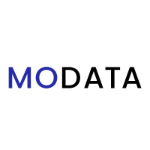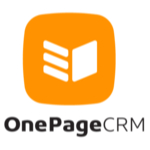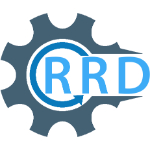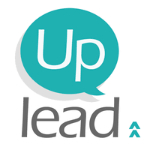TechnologyCounter provides genuine, unbiased real user reviews to help buyers make informed decisions. We may earn a referral fee when you purchase through our links, at no extra cost to you.
List of 15 Best Sales Productivity Software
Showing 1 - 15 of 51 productsSalesDiary is a efficient and innovative solution for all your sales tracking needs. With SalesDiary, you can effortlessly organize and manage your sales data, track your progress, and make informed decisions to boost your business. Say goodbye to ma...Read SalesDiary Reviews
Are you in search of a powerful is a software that can take your digital imprinting to the next level? Look no further than Imprint - Asti. Designed to streamline and simplify the imprinting process, this software offers unparalleled precision and sp...Read Imprint - Asti Reviews
Yesware is a sales productivity toolkit that helps professionals reach their sales goals by streamlining their email process and providing valuable insights and scheduling tools. With its user-friendly interface and customizable features, Yesware emp...Read Yesware Reviews
Mozility is a software that will revolutionize your business strategies. With its advanced features and user-friendly interface, Mozility offers a seamless experience to help you stay ahead in todays dynamic market. Say goodbye to outdated methods an...Read Mozility Reviews
Pocket Buzz - your ultimate social media management tool for on-the-go updates and engagement. With its user-friendly interface and powerful features, Pocket Buzz simplifies the process of managing your social media platforms, saving you time and boo...Read Pocket Buzz Reviews
MoData is a powerful, data-driven software that allows businesses of all sizes to gain valuable insights, make informed decisions and fuel growth. With its user-friendly interface features, MoData empowers organizations to accurately track and analyz...Read MoData Reviews
OnePageCRM is your ultimate solution for streamlining your sales process and increasing productivity. With its user-friendly interface and powerful features, OnePageCRM helps you stay on top of your leads and close deals faster. Say goodbye to tediou...Read OnePageCRM Reviews
Round Robin Distributor is a software designed to revolutionize the way your business distributes tasks among team members. With its efficient round-robin system, this software ensures equal and fair distribution of tasks, maximizing productivity and...Read Round Robin Distributor Reviews
Cien, the innovative software solution that is revolutionizing the world of sales. Designed with advanced technology and backed by years of research, Cien maximizes sales team performance like never before. Say goodbye to guesswork and hello to data-...Read Cien Reviews
Docsify is a yet user-friendly documentation software that aims to streamline the process of creating and managing online documentation. With its intuitive interface and robust features, Docsify is the go-to choice for individuals and businesses look...Read Docsify Reviews
Salesmate is a CRM software designed for small to medium-sized businesses to improve their sales management. This powerful solution allows businesses to effectively monitor sales progress, track deals, and generate real-time sales reports. It simpli...Read Salesmate CRM Reviews
EmailAnalytics is a tool for tracking and analyzing email data. This powerful software provides valuable insights and metrics to help boost productivity and efficiency for any organization. Say goodbye to guesswork and hello to concrete data-driven d...Read EmailAnalytics Reviews
ZoomInfo is a platform that revolutionizes the way businesses identify, target, and engage with potential customers. With its extensive database of contact and company information, ZoomInfo provides businesses with invaluable insights and connections...Read ZoomInfo Reviews
Pipedrive is a popular web-based CRM that is highly favored by many sales teams. It is designed to streamline the sales process by serving as both a central hub for deals and a sales pipeline management tool. This allows team members to stay focused...Read Pipedrive Reviews
UpLead, the ultimate lead generation tool for businesses of all sizes. With its powerful database, advanced search features, contact information, UpLead helps you find and connect with your target audience, making it easier than ever to convert leads...Read UpLead Reviews
- What Is Sales Productivity Software?
- Top Reasons Why Businesses Need Sales Productivity Software?
- What Are the Top Key Features of Sales Productivity Software?
- What Are the Top Benefits of Sales Productivity Software?
- What Are the Steps to Choose the Right Sales Productivity Software?
- What Are the Types of Sales Productivity Software for Different Industries?
- What Are the Technology Trends for Best Sales Productivity Software?
- What Are the Deployment Options for Sales Productivity Software?
What Is Sales Productivity Software?
Sales productivity software is a platform that automates the management and tracking of sales operations. It enables them to find sales possibilities, develop client relationships, increase team communication, and improve sales performance.
Dashboards in sales productivity platform provide insights into sales operations such as key performance indicators of sales, conversion ratios, engagement rates, customer happiness scores, and more. It also helps sales teams collaborate and work more efficiently by improving communication, tracking leads, and automating processes.
Furthermore, sales productivity tools helps to reduce customer churn by assisting teams in developing strong relationships and ensuring that clients have a positive experience with the organization. This enables them to engage customers proactively and detect any potential gaps in the customer journey.
Finally, the best sales productivity software can assist sales teams in becoming more effective, productive, and profitable.
Top Reasons Why Businesses Need Sales Productivity Software?
1. Improved customer relationship management by tracking client facts, interactions, opportunities, and tasks more effectively.
2. Recognising sales patterns and gaining a deeper grasp of client behaviour.
3. Automating the lead generation and qualification process.
4. Simplifying the sales process.
5. Improved team collaboration through work assignment and progress tracking.
6. Sales operations and reporting automation.
7. Consolidating multiple sales channels' data into a single platform.
8. Access to vital analytics for improving sales strategy.
9. Using real-time dashboards and goal tracking to visualize team performance.
10. Using gamification and incentive methods to increase sales productivity.
11. Make lead scoring, routing, and segmentation more efficient.
12. A centralized store for client data that the sales staff can access.
13. Using the sales software to plan and execute marketing initiatives.
14. Interoperability with other corporate systems such as ERP, CRM, and finance.
15. Keeping a complete record of all client data, interactions, and transactions for transparency and compliance.
What Are the Top Key Features of Sales Productivity Software?
• Automated Sales Cycle: From initial contact to customer checkout, sales productivity software automates the whole sales cycle. Prospecting, lead and quote creation, customer relationship management (CRM), sales forecasting, invoicing, and reporting are all streamlined as a result.
• Lead Management: Users can quickly organise, track, and manage leads throughout the sales cycle thanks to comprehensive lead management capabilities. Lead generation, contact management, lead scoring, and email automation are all part of this.
• Propensity to Buy: Users can properly estimate client purchasing behaviour using predictive analytics technologies. This allows sales teams to personalise their approach to customers depending on their purchasing habits and preferences.
• AI Assistants: Virtual assistants powered by AI automate sales duties including customer onboarding, product promotion, and prospect sourcing.
• Analytics: Real-time analytics systems deliver accurate insights into client purchase trends, sales performance, and ROI to sales teams. This enables them to make better decisions and anticipate client needs.
• Mobile Integration: Users can access the best sales productivity software via mobile platforms such as smartphones and tablets using mobile optimization tools. This keeps teams linked to their data and customers at all times.
• Automated Workflows: Automation-based workflows ensure that sales teams can respond to client inquiries rapidly. This can drastically minimize the amount of time and effort required to finish a sales cycle.
• Cloud-based Platforms: Scalability and flexibility are provided by cloud-based solutions. This ensures that users can access their data securely and reliably from any place.
• Integrations: Integrations with common CRM and ERP platforms enable sales teams to access data from different sources quickly and effortlessly.
What Are the Top Benefits of Sales Productivity Software?
1. Increased Efficiency: Sales productivity software enables managers to track sales data in real-time, streamline processes, and promote cross-departmental collaboration. This results in a more efficient process and helps to ensure that sales targets are met more quickly.
2. Automated Tasks: Menial chores like customer segmentation, data entry, and lead scoring are automated by the sales productivity platform. As a result, sales representatives have more time to focus on closing deals and increasing income.
3. Improved Insight: The best sales productivity software can help managers develop new ways to raise conversion rates by providing insights into customer behaviours and sales trends.
4. Increased Collaboration: Sales productivity tools facilitate communication between departments by utilising common data, reports, and calendars. This allows salespeople and supervisors to obtain a better understanding of each other's operations, which can lead to stronger teamwork.
5. More Accurate Forecasting: Sales productivity tools enable salespeople and managers to estimate sales patterns and future revenue with more accuracy, enabling improved planning and decision-making.
6. Enhanced Sales Flow: The sales productivity platform eliminates the guesswork in the sales process by offering visibility into each stage of the sales cycle, increasing productivity and decreasing client reaction times.
7. Flexible Pricing: Sales productivity software is available in a number of pricing levels, making it accessible to enterprises of all sizes.
8. Data Export and Integration: Sales productivity tools frequently include the ability to interact with other programmes and export data to other platforms, providing users with unrivalled flexibility and ease.
9. Increased Visibility: Sales productivity software gives managers and salespeople visibility into sales trends, data, and metrics, allowing them to stay on top of the market and make informed decisions.
What Are the Steps to Choose the Right Sales Productivity Software?
1. Define Your Goals and Objectives: Begin by clearly identifying your company's sales productivity goals and objectives. This will assist you in determining your individual demands and the best way to meet them.
2. Determine Your Necessary Features: Once you've determined the goals you want to achieve, consider which features you'll need in the software to get there. Make a list of the software features you desire and prioritize the most important ones.
3. Research Provider Options to Find the Right Fit: Begin exploring provider possibilities once you have a clear list of the characteristics you require. The best sales productivity software is provided by companies such as Insightly and Salesforce. Before making any commitment, consider the cost, customer reviews, and available technical assistance.
4. Integrate and Test: Once you've decided on a provider, you'll need to integrate and test your chosen software. Check that the features suit your requirements and that the software is simple to use for your staff. Before you commit to utilizing the software full-time, conduct a practice run to see whether any noise is detected.
5. Roll Out and Monitor: Once the sales productivity tools are installed, you can begin distributing them to your team and tracking their usage. Keep track of how it affects your team's productivity and adapt your operations accordingly.
What Are the Types of Sales Productivity Software for Different Industries?
1. Retail Sales Productivity Software: This software assists retail stores in managing client interactions, order processing, streamlining sales processes, and inventory management. Customer relationship management (CRM) tools, analytical reports, order fulfilment tracking, and automated order entry may also be included.
2. Medical Sales Productivity Platform: This software assists medical professionals in scheduling appointments, streamlining billing, pulling reports, tracking payments, and managing referrals. It may also contain electronic health records, analytics, scheduling, clinical support, and inventory management functionalities.
3. Real Estate Sales Productivity Software: Real estate professionals can use this software to manage client interactions, track leads, generate contracts, and handle analysis reports. It may also incorporate predictive analytics, scheduling, marketing, spending tracking, and contact management tools.
4. Manufacturing Sales Productivity Software: This software assists manufacturers in streamlining sales operations by providing capabilities such as order input, tracking, analytical reports, and marketing automation. It may also incorporate product design, costing, customer relationship management, and order fulfillment functions.
5. Educational Sales Productivity Tools: Educational sales productivity technologies improve sales teams' efficiency in the education industry by streamlining lead generation, CRM, communication, and analytics. These technologies automate repetitive processes, give data-driven insights, and increase organization and communication, allowing salespeople to concentrate on relationship building and deal closing.
What Are the Technology Trends for Best Sales Productivity Software?
The technology trends for best Sales Productivity Software generally involve increasing the speed, reliability, and scalability of the solutions offered. Specifically, this includes the following trends:
1. Automation of selection processes and order placements: This saves time and effort spent on manual operations, allowing teams to concentrate on value-added tasks.
2. Adaptive interfaces that adjust to user needs: This makes the software more intuitive and user-friendly, enhancing customer satisfaction.
3. Integration of analytics and big data: Users can obtain insight into customer behavior and trends by integrating analytics and big data into a sales productivity platform, enabling more efficient and productive sales methods.
4. Cloud-based platforms: This improves departmental collaboration, lowers hardware costs, increases scalability, and minimizes the time required to implement improvements.
5. Mobile access: Giving consumers mobile access to their sales productivity software allows them to be more productive even while they are away from the office.
6. Security features: Given the sensitivity of client data, it is critical to guarantee that the software is secure and that security updates are performed on a regular basis.
What Are the Deployment Options for Sales Productivity Software?
Sales Productivity Software deployment options include:
1. Cloud-based: In this case, the software is hosted in the cloud, which means that the client or user can access it from anywhere in the world via the internet, with no installation or hardware required.
2. On-premise: This option entails installing the program locally on the customer's own servers, which necessitates hardware and security configuration as well as regular maintenance.
3. Hybrid: This option combines the benefits of both cloud and on-premise deployment approaches, allowing the customer to put certain software components in the cloud while maintaining control over others on-premise.















